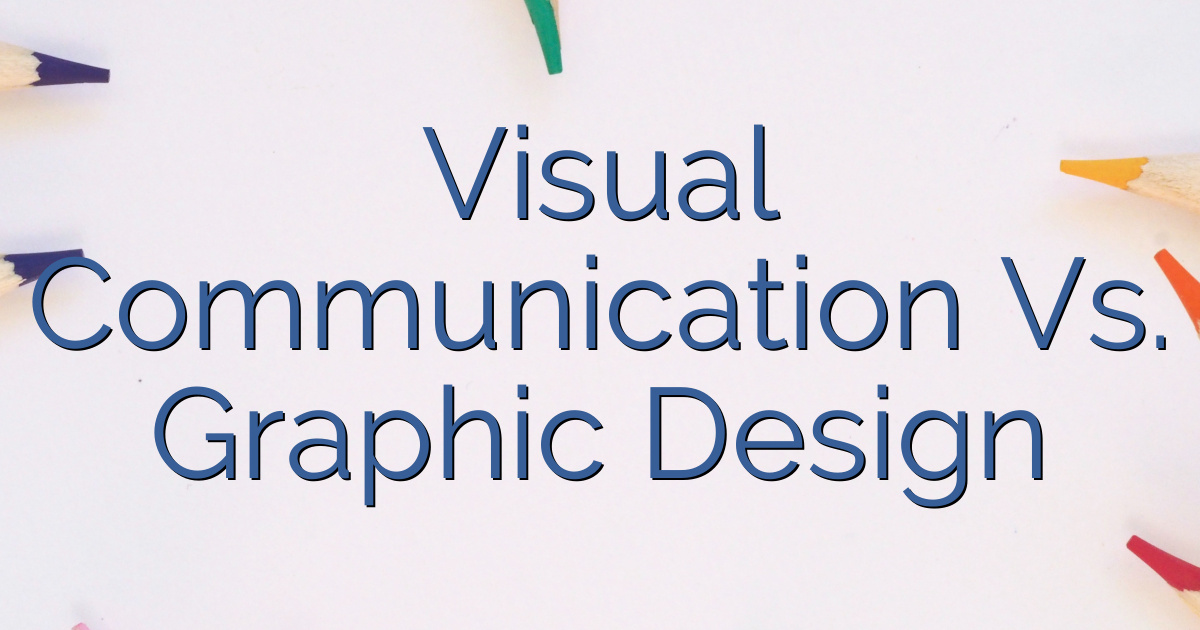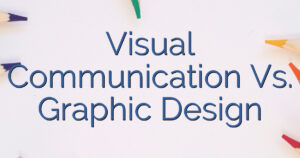 Are you torn between pursuing a degree in Visual Communication or Graphic Design?
Well, here’s an eye-opening statistic for you: 87% of employers believe that visually compelling content is crucial for effective communication.
Now, imagine yourself as the creative force behind those captivating designs.
In this article, we’ll compare the two majors, exploring their curriculum, career opportunities, and salary potential.
So, buckle up and get ready to make an informed decision that will shape your future in the visually captivating world of design.
Are you torn between pursuing a degree in Visual Communication or Graphic Design?
Well, here’s an eye-opening statistic for you: 87% of employers believe that visually compelling content is crucial for effective communication.
Now, imagine yourself as the creative force behind those captivating designs.
In this article, we’ll compare the two majors, exploring their curriculum, career opportunities, and salary potential.
So, buckle up and get ready to make an informed decision that will shape your future in the visually captivating world of design.
Table of Contents
Key Takeaways
- Both Visual Communication and Graphic Design involve creating and communicating through visual elements.
- Both majors focus on technical skills, conceptual thinking, and creative problem-solving.
- Both majors offer a range of job prospects in visual communication, with opportunities in digital media and emerging technologies.
- Typography plays a crucial role in both majors, as it conveys messages, evokes emotions, and enhances the overall aesthetic and effectiveness of a design.
Overview of the two majors: Visual Communication and Graphic Design
In Visual Communication and Graphic Design, you’ll find that both majors involve creating and communicating through visual elements. The curriculum structure for both majors focuses on developing technical skills, conceptual thinking, and creative problem-solving. Visual Communication delves into the broader aspects of visual storytelling, including photography, video production, and animation. On the other hand, Graphic Design centers around the creation of visual materials for print and digital media, such as logos, brochures, and websites. Both majors equip you with the necessary skills to thrive in the ever-evolving design industry. When it comes to job prospects, both Visual Communication and Graphic Design offer a range of exciting career opportunities, such as graphic designer, art director, web designer, and multimedia artist. The demand for skilled professionals in these fields continues to grow, making it an excellent choice for those passionate about visual communication.Overview of the curriculum and courses of the two majors
Take a look at the curriculum and courses offered in both majors to get a better understanding of what to expect. Here are the key differences between the curriculum of Visual Communication and Graphic Design:- Visual Communication focuses on the broader aspects of communication, including design theory, typography, and multimedia production. It emphasizes visual storytelling and the use of various mediums to convey messages effectively.
- Graphic Design, on the other hand, places a stronger emphasis on the technical and practical aspects of design. It covers courses such as digital imaging, web design, and print production. The focus is on creating visually appealing and functional designs for various platforms.
- Visual Communication incorporates courses that explore the intersection of design and technology, such as interactive media and user experience design. It prepares students for careers in digital media and emerging technologies.
- Graphic Design curriculum includes courses that delve into branding, marketing, and advertising. It equips students with the skills needed to create cohesive design solutions for businesses and organizations.
Overview of coursework, assessments, and industry-specific projects.
Explore the coursework, assessments, and industry-specific projects to gain a comprehensive understanding of what you can expect in both majors. In visual communication and graphic design, you will face coursework challenges that push your creative boundaries. From typography and color theory to motion graphics and web design, you’ll develop a wide range of skills to excel in the field. These courses will challenge you to think critically, problem-solve, and communicate visually. Additionally, industry projects assessment is a crucial aspect of both majors. You will have the opportunity to work on real-world projects that simulate the professional environment. This hands-on experience will not only test your knowledge and skills but also provide valuable insights into the industry.Comparison of Skills Developed: Creativity
Developing your creativity is a key aspect of both majors, allowing you to think outside the box and create visually compelling designs. In the field of visual communication and graphic design, creativity is crucial in problem solving and approaching design challenges with innovative solutions. As a visual communicator or graphic designer, you are constantly faced with the task of conveying messages effectively through visuals. This requires a unique and creative approach to problem solving, finding innovative ways to visually communicate ideas and concepts. Whether it’s designing a logo, creating a website layout, or developing a marketing campaign, your ability to think creatively and come up with fresh and visually captivating designs will set you apart in the industry. Embrace your creativity and let it guide you as you explore new design approaches and push the boundaries of visual communication.Comparison of Career Opportunities and Job Roles: Advertising
Advertising offers a wide range of career opportunities and job roles that allow you to showcase your creativity and strategic thinking in developing compelling marketing campaigns. With the ever-expanding digital landscape, the demand for advertising professionals has increased exponentially, providing you with abundant job opportunities. Whether you choose to be a copywriter, art director, media planner, or account executive, each role requires a unique set of skills that contribute to the success of a campaign. In the world of advertising, skill development is paramount. You will learn to craft persuasive messages, analyze target audiences, and leverage various mediums to effectively communicate brand messages. The dynamic nature of this industry ensures that you are constantly challenged and encouraged to push boundaries, making advertising an exciting and fulfilling career choice.Comparison of Salary Potential: Job Market Trends
When it comes to salary potential and job market trends, you’ll be interested to know that the advertising industry offers competitive compensation and a promising outlook for professionals. In fact, the job market outlook for advertising professionals is projected to grow steadily in the coming years, creating ample opportunities for career advancement and financial success. Here are a few reasons why the advertising industry is worth considering:- High earning potential: With the right skills and experience, you can earn a lucrative salary in the advertising field, surpassing the average income in many other industries.
- Steady salary growth: As you gain more experience and climb the corporate ladder, your salary is likely to increase significantly, rewarding your hard work and dedication.
Similarities between Visual Communication and Graphic Design: Design Thinking
Design thinking is a creative problem-solving approach that focuses on user needs and empathizing with their experiences. When it comes to visual communication and graphic design, both disciplines rely on this design process to create effective and impactful designs. By using design thinking, designers can identify the problem at hand, gather insights from users, brainstorm ideas, prototype solutions, and test them to ensure they meet user needs. To showcase the similarities between visual communication and graphic design in terms of design thinking, let’s compare the two in a table:| Visual Communication | Graphic Design |
|---|---|
| Focuses on conveying messages and information visually | Emphasizes creating aesthetically pleasing and functional designs |
| Utilizes typography, layout, color, and imagery | Utilizes typography, layout, color, and imagery |
| Considers the target audience and their preferences | Considers the target audience and their preferences |
| Aims to communicate ideas, emotions, and concepts effectively | Aims to communicate ideas, emotions, and concepts effectively |
What are the key differences between visual communication and graphic design?
Visual communication focuses on conveying a message through images, while graphic design comparison visual communication involves creating those images. Graphic design encompasses a broader range of skills, including layout, typography, and color theory, while visual communication can encompass a wider range of media, such as photography, film, and digital design.

